| Launch:2019-07-26 |
* Introduction
Medicinal safety is closely related to people's lives. Although the state is strict in the detection and control of drugs, there are still many counterfeit medicinal, generic medicinal and serious threats to people's health in the market. Therefore, a rapid identification method of medicinal is particularly important. Raman spectroscopy, as a new detection technology, is widely used in the field of medicinal analysis because of its sensitivity to changes in the molecular skeleton structure and spatial arrangement of drugs. It can be used for the study of salt forms, hydrates, crystal forms and optical isomers of drugs. Raman spectroscopy is widely used in the qualitative and quantitative detection of drugs and the identification of counterfeit drugs because of its sharp peaks, non-destructive testing, sample needing no pretreatment, weak signal to water and other advantages. Raman spectroscopy can be used for the quality control of pharmaceutical excipients and on-site rapid detection because of its fast analysis speed, fingerprint and molecular structure.
* Application
Identification of Amlodipine Besylate Tablet based on Raman spectrum of pharmaceutical excipients
The laser source wavelength is 785nm and the power is 100mW. The Amlodipine Besylate Tablet from five manufacturers of B, C, D, E and F was tested. A was the original research drug of Amlodipine Besylate Tablet. The results were compared with the original research drug and pharmaceutical excipients. The following diagram
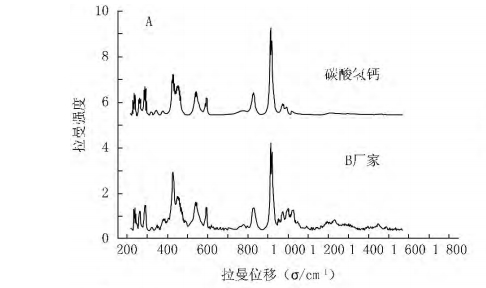
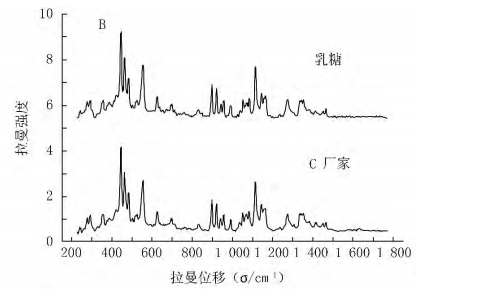
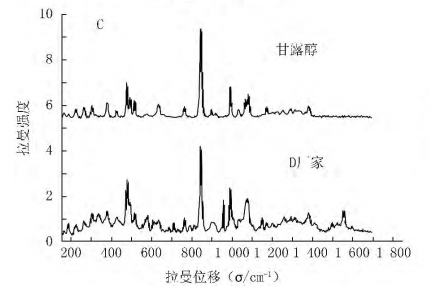
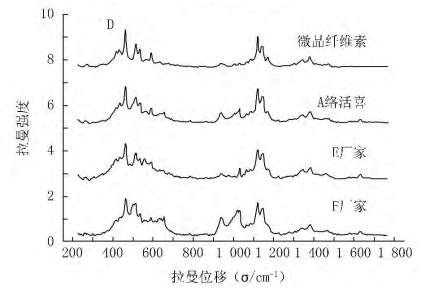
Fig. 1 Raman spectra of different factories and comparison with Amlodipine Besylate Tablet
Raman spectra show that B, C, D Raman spectra are very different from the original drug. The main components are calcium bicarbonate, lactose and mannitol, which are not the main components of the original drug. It can be seen that the Raman spectrum can be used to identify the drugs rapidly and accurately.
Rapid determination of Ganciclovir for Injection by Raman spectroscopy
Ganciclovir is an antiviral drug. Perchloric acid titration and high performance liquid chromatography are commonly used. However, both methods have complex sample preparation and operation, and take a long time. Raman spectroscopy can also be used for the determination of ganciclovir as a drug for rapid determination of molecular structure.
Raman spectroscopy of ganciclovir solution, sample and excipient 0.4% sodium hydroxide at the same dose was performed. The results are as follows
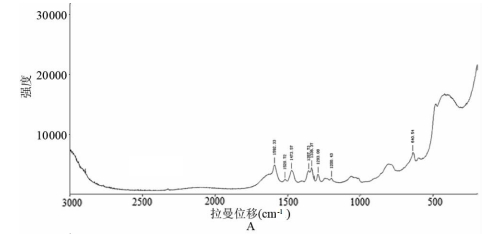
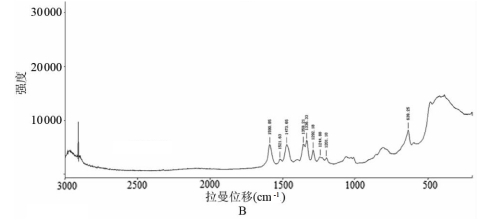
Fig.2 Raman spectrum of ganciclovir solution Fig.3 Raman spectra of Ganciclovir for Injection samples
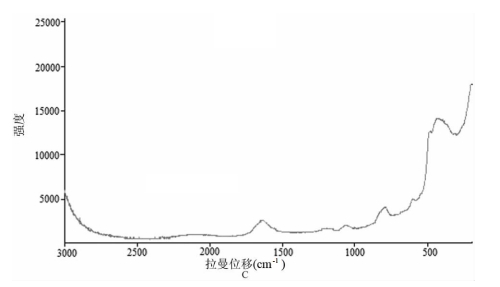
Fig.4 Raman spectrum of 0.4% sodium hydroxide solution
Raman spectra showed that the Raman spectra of ganciclovir and ganciclovir for injection were similar, and the excipient sodium hydroxide had no effect on the identification. Ganciclovir could be identified by Raman spectra.
Raman spectroscopic determination of ganciclovir at different concentrations of 2.5, 5.0, 10, 25, 50 mg mL 1 was carried out.
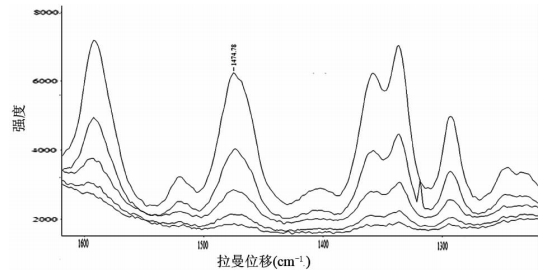
Fig.5 Raman spectra of ganciclovir solution with different concentrations
A good linear relationship can be obtained by fitting the peak area data, and the concentration of ganciclovir can be quantitatively analyzed.
Raman spectroscopy has been widely used in pharmaceutical analysis, not only for qualitative and quantitative analysis of some chemicals, but also for the detection of substances in traditional Chinese medicine. In drug analysis, Raman spectroscopy will be more and more widely used because of its fast, non-destructive, accurate, convenient and other advantages.
Reference:
Raman spectroscopy identification based on pharmaceutical excipients, Xiaofeng Qian
Rapid determination of the content of ganciclovir for injection by Raman spectroscopy, Renliang Zou

